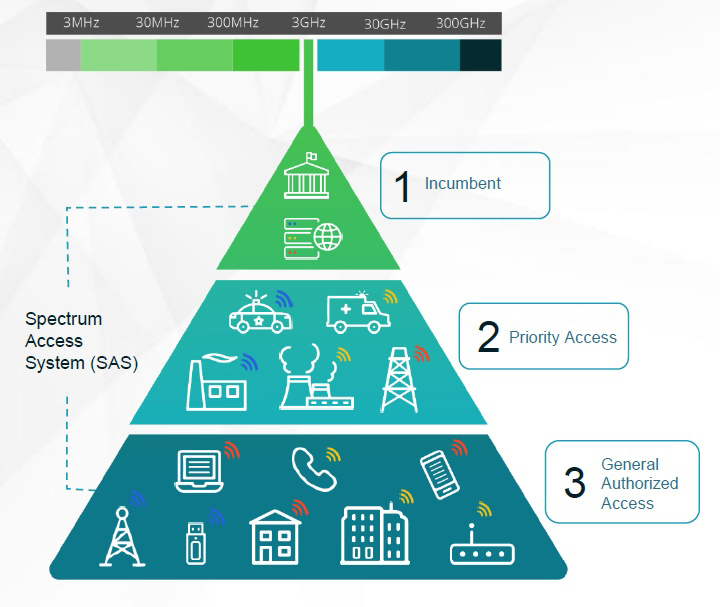FCC: Jury Still Out on ‘Dynamic’ Spectrum Sharing
WASHINGTON — The Federal Communications Commission has told Congress it still hasn’t determined whether its dynamic spectrum sharing model can be used to allow larger commercial carriers to share the 3.5 Gigahertz allocated for unlicensed Citizens Broadband Radio Service (CBRS).
That finding came in a report from the Wireless Telecommunications Bureau and Office of Engineering and Technology (OET). Currently on the witness stand is television’s white spaces regime, with the CBRS band the next up.

The FCC has finalized the rules and granted conditional approval to the dynamic sharing system for CBRS and is moving toward final approval and initial commercial deployments. It has also certified equipment, and has told Congress that collaboration among the stakeholders has been excellent.
Companies — most notably Amazon — and cable operators have been eyeing the CBRS band.
Dynamic sharing employs devices that can sense available spectrum and adjust their power levels to avoid interference, as well as databases for protected services that the devices can access, and advanced antennas to steer signals away from incumbents.
But there is a “but” in that dynamic spectrum future.
In a mandatory “Spectrum Pipeline” report to Congress this month on the agency’s progress in freeing up new spectrum by reallocation or sharing — a report required by the RAY BAUM’S Act FCC reauthorization bill — the agency said it and its stakeholders are “confident and excited” about the prospects of CBRS for commercial use, and dynamic sharing, but the consensus comments for that report advocate a “wait-and-see” approach.
Multichannel Newsletter
The smarter way to stay on top of the multichannel video marketplace. Sign up below.
That makes the white spaces and CBRS groups a sort of spectrum “canary in the coal mine” for dynamic sharing, and the FCC signaled it will wait and see how the canary fares.
On the white spaces side, broadcasters have registered complaints about how the all-important database identifying existing users is being managed and how effective it is at steering the unlicensed devices clear of TV station signals.
The FCC is still weighing that input and made it clear in the report that dynamic sharing in general is a work in progress.
“It is too soon to know whether other bands may be suitable for licensed or unlicensed use based on the techniques used in the 3.5 GHz band,” the agency told Congress. “The commission will continue to monitor and consider relevant developments.”
White Spaces Sharing OK’d
While the jury is still out on other bands, the FCC has already concluded such dynamic sharing can be used in the TV spectrum band, represented by the TV white spaces regime, a point the FCC made to Congress.
“[D]ynamic spectrum access techniques formed the basis for unlicensed access to spectrum in the TV white spaces,” it said. “This, in turn, was the precursor to the development of the more sophisticated sharing techniques that are manifest in the Citizens Broadband Radio Service.”
But whether “sophisticated” in concept translates to “effective” in practice remains open for cross examination.
Contributing editor John Eggerton has been an editor and/or writer on media regulation, legislation and policy for over four decades, including covering the FCC, FTC, Congress, the major media trade associations, and the federal courts. In addition to Multichannel News and Broadcasting + Cable, his work has appeared in Radio World, TV Technology, TV Fax, This Week in Consumer Electronics, Variety and the Encyclopedia Britannica.

